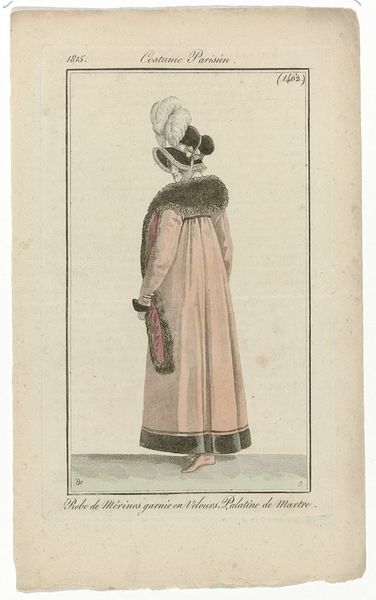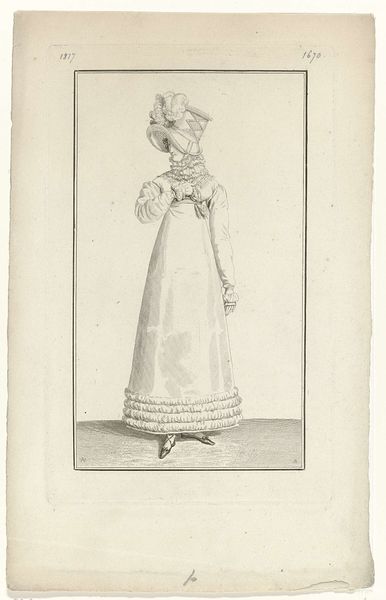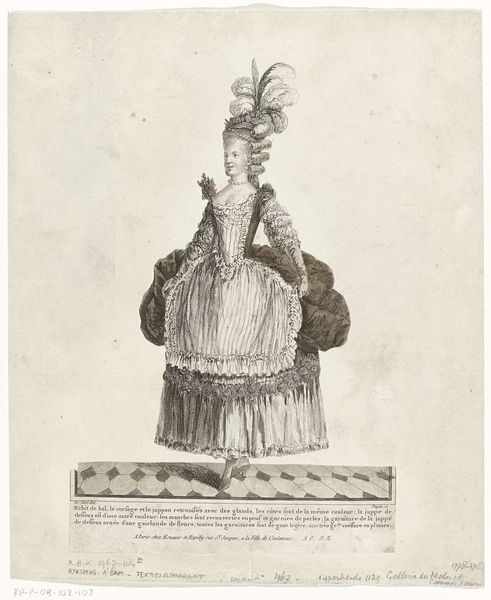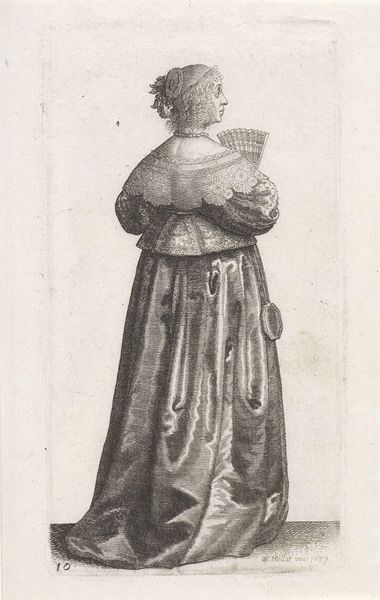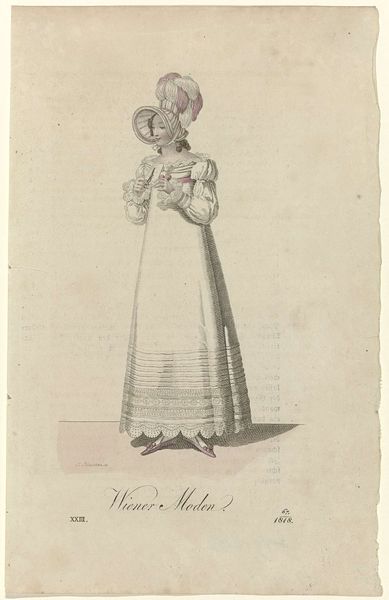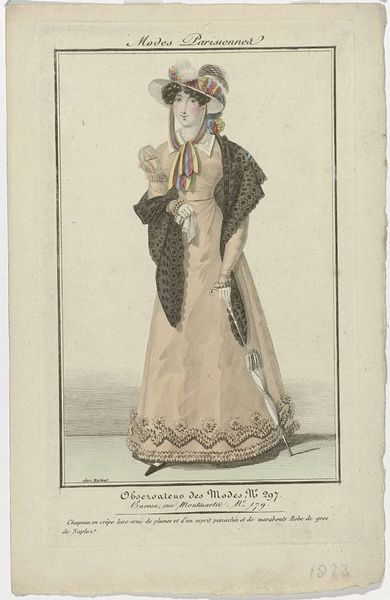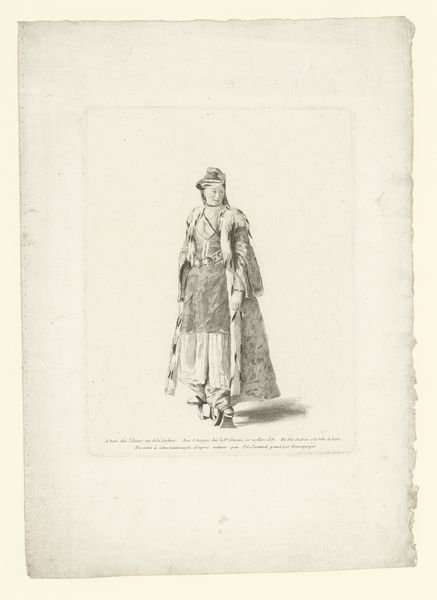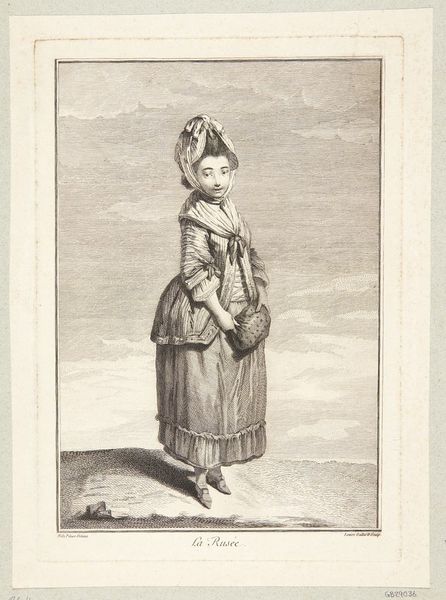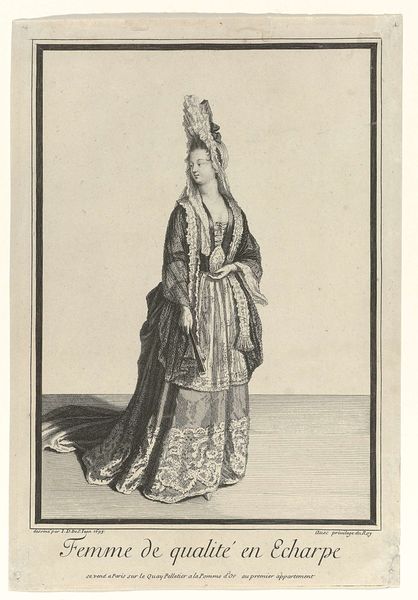
Journal des Dames et des Modes, Costume Parisien, 5 avril 1817 (1638) 1817
0:00
0:00
print, engraving
#
portrait
#
neoclacissism
# print
#
old engraving style
#
figuration
#
line
#
genre-painting
#
engraving
Dimensions: height 180 mm, width 110 mm
Copyright: Rijks Museum: Open Domain
Curator: This is "Journal des Dames et des Modes, Costume Parisien, 5 avril 1817", or number 1638, a print made in 1817 by Pierre Charles Baquoy. It's currently held in the Rijksmuseum. Editor: Immediately, I see a symbol of constraint in the clothing; everything is so structured and corseted. But the ruffled details and overall style suggest a more innocent or even naive sensibility. Curator: Yes, look closely at the engraving itself. The use of line suggests both neoclassical restraint, a clear preference for order, but there's also such intricate detailing. I wonder about the labor involved in the dressmaking itself and translating such labor into an image designed to fuel consumer desire? Editor: Indeed! The details resonate! Those cascading ruffles and floral trim, combined with that striped bonnet; these visual elements together project gentility, a kind of self-conscious performance of "femininity" during the Regency era. Curator: And that’s the journal's aim: constructing and circulating ideas about taste, class, and womanhood via such consumer goods as dress. What's particularly fascinating to me is to ponder how the mass production and circulation of fashion prints actually shaped the materiality of the dresses people then desired to own and wear. Editor: And what's also curious, beyond the surface elegance, is how ephemeral such constructed notions of femininity often turn out to be. A portrait like this, meant to signify status and adherence to convention, now appears quite alien, a time capsule of sorts. Look closely at the color relationships, how demure yet decorative are the contrasting visual patterns of light and dark throughout. This symbolizes a struggle to establish cultural norms around feminine virtue at that time. Curator: I find it intriguing to consider how each line, each dot of the engraving became a commodity intended for circulation and emulation, yet reliant on unseen, often undervalued, labour for both its production and the production of the garments depicted. Editor: Agreed, examining this print offers such an incisive entry point into visualising cultural expectations and anxieties embedded within the simplest forms of self-presentation.
Comments
No comments
Be the first to comment and join the conversation on the ultimate creative platform.
